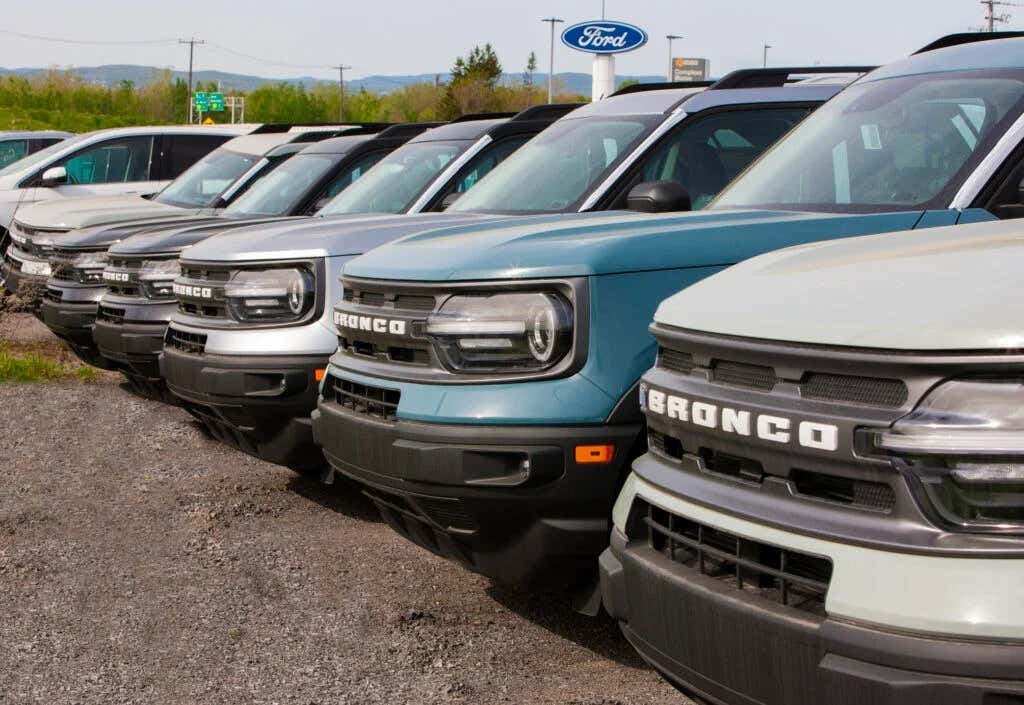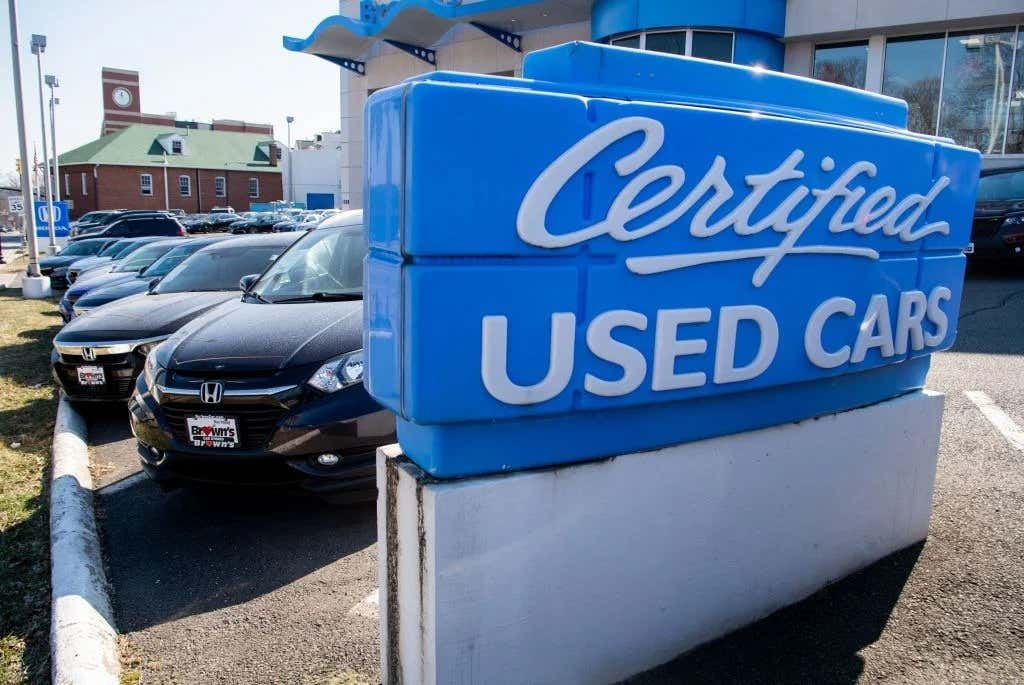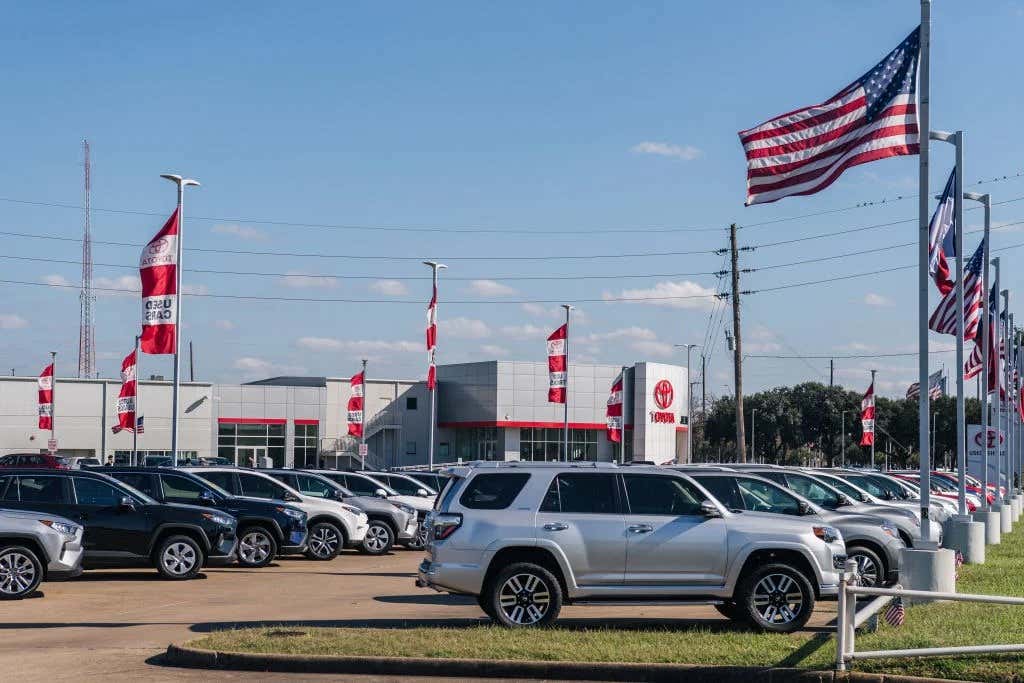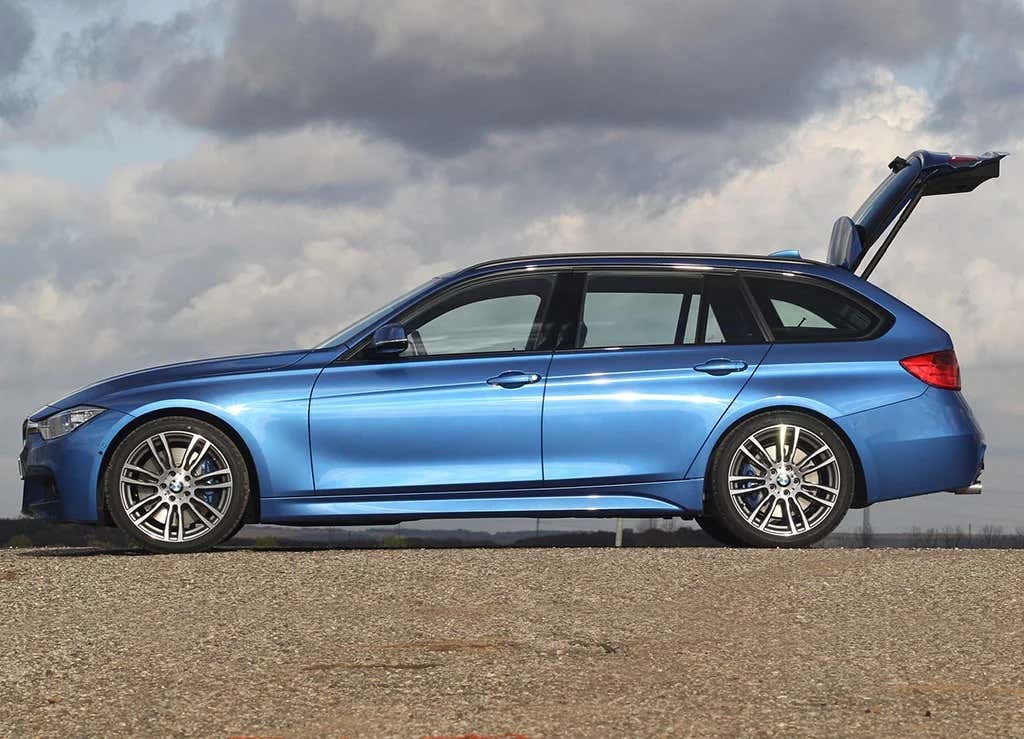There is no other way to say it: The car market still sucks. Buyers are frustrated at the lack of inventory, and prices for new, pre-owned, and leased cars are at stratospheric levels. The pandemic, the chip shortage, supply chain disruptions, labor shortages and more have combined to make a kind of horrible Voltron of automotive price-gouging.
Despite this difficult situation, people still need cars and some of us are still trying to navigate this process. Here are some strategies you can use to do so successfully too.
I’ve been running a car-buying service since 2012. My team and I handled over 500 car deals in 2021, ranging from affordable compacts to high-end exotics. We assisted clients all over the country in what was and continues to be an incredibly challenging market. Here is what I have learned over the past year that can help you get a competitive deal right now.
Ford Bronco Sports awaiting sale.
Why Are New Cars So Hard To Find?
If you drive by your local car dealership, you may find it to be fairly empty compared to what you are used to seeing. There are exceptions to this, but for the most part, dealers just aren’t getting the typical volume of inventory they normally would.
One of the biggest reasons behind this remains the ongoing microchip shortage on the supplier side. Without getting back into a deep dive on semi-conductor production, we can acknowledge that modern cars are filled with sophisticated sensors, electronic equipment, software, and computers. Automakers still can’t get enough microchips to complete the production of their vehicles and many of these brands have had to either stop or reduce the production of their vehicles.
Dealers are getting fewer cars, so you don’t need to be an expert in supply and demand economics to figure out that fewer cars are going to mean higher transaction prices. Not a day goes by where we don’t see a story about some absurdly high markup on even an ordinary vehicle, or automakers themselves warning dealers not to take it too far.
Honda’s expanding its certified used car program to increase dealer profits further.
How Does This Impact Used Cars?
Most American car buyers don’t plan their purchases very far in advance. When shoppers go looking for a target model that is brand new only to find that it isn’t available, they often pivot to something similar in the pre-owned market. With more buyers essentially forced into the used market, this is driving up prices. It isn’t uncommon to see pre-owned models with asking prices that are higher than the MSRP of the brand new car.
Yes, it’s that bad. Earlier this month, CNBC reported the average price of one- to three-year-old used cars is around $41,000, more than 50 percent higher than a year prior. And older used cars go for around $31,000 on average — more than $10,000 higher than the same vehicles before the pandemic started.
Since Used Car Values Are Up, Leasing Must Be A Good Idea, Right?
You would think that this increase in used car values would have a positive impact on new car leases since the bulk of the payment calculation has to do with the difference between the sale price and the resale value of a certain car. Unfortunately, you would be wrong.
The reality of leasing in this current market is very different. The finance arms that underwrite leases aren’t using the current used car values in their calculations. The reason being is that this market isn’t likely to last for the next three years and if a bank makes a bet that a model is going to be worth 70 percent of its value down the road and it turns out that car only retained 50 percent of its value, that bank is in a bad spot when the lease comes back. However, if the bank bets on the car being worth 50 percent of its value, but the car is worth more than predicted, the lender is still in a good spot.
This combination of standard residual values coupled with a lack of discounts, minimal rebates, and rising money factors (interest rates) has come together to make most leases not palatable for the average consumer.
Vehicles with an anachronistic appeal, like Toyota 4Runners and Jeep Wranglers, seem to consistently have particularly high asking prices.
In many cases, when you look at the total lease cost over the term and compare that to purchasing/financing that car and selling it after three years, the cost is often cheaper on the buy-sell versus the lease. For example, when I was helping a customer with a $28,000 (about $31,500 with tax and fees) Hyundai Tuscon, the payments were a whopping $548 a month for a total lease cost of $19,728. If this customer bought the car at the $31,500 out-the-door price and sold it a few years later, it is highly unlikely they would be losing almost $20,000 in value.
In other words, the vast majority of folks shopping for new cars should probably focus on purchasing rather than leasing since the math doesn’t favor the lease. But run the numbers both ways and compare the total costs and payments. Often, you will find that the loan payments and lease payments are so close that you are better off buying it.
For folks who have a current lease that is ending soon, there may be opportunities to take advantage of some equity that you have in your leased car. This can be tricky as many automakers have put restrictions on what are called “third-party lease buyouts.” So in order to take advantage of that equity, the lessee would have to purchase their leased car from the bank that underwrites the lease and then turn around and re-sell or trade that car.
Is Getting A “Deal” On A New Car Even Possible?
That all depends on how you define “deal.” What a competitive price looks like right now is very different than what it would have been a few years ago. Consumers need to understand that getting a “deal” is relative to the rest of the market.
You can use real estate as an analogy. While the housing market undergoes more severe fluctuations compared to the automotive market, knowing whether or not you secured a good market price on a home has to do with what other folks are paying for similar homes within that market. A recent report revealed that 80 percent of car buyers are paying over sticker price, so if you were to get a car at MSRP, you did better than most.
Your best chance of scoring a competitive price all comes down to how flexible you are. The buyers that are hyper-specific about what they want and need to buy something in a short amount of time set themselves up for a frustrating experience and are most likely to pay a premium.
On the contrary, the folks that don’t need a car right now, and have the ability to wait several months for an order, are more likely to get closer to what they want. If you don’t have the luxury of waiting, being flexible about which model you buy and being open to various colors, options and trims will increase your chances of success. Basically, if you need to buy a car right now, you may just have to take what you can get — and above all, what you can afford.
Another thing to be aware of is that some brands are in better shape than others when it comes to production. I have found that in some markets Toyotas are easier to come by compared to other Japanese brands and I’ve even scored some ordered Jeeps and Rams within reasonable time frames and with some discounts.
Furthermore, your willingness to shop beyond your regional market will widen your net to dealers that have the car you want and who may be willing to sell it at a reasonable price. A few months back I had a very smart Kia dealer reach out to me to offer my customers brand new Tellurides (or anything in the Kia catalog) at MSRP. This dealer was willing to sell to any customer anywhere in the country. Needless to say, there are several dozen happy Kia customers out there that didn’t pay the massive markups.
One caveat to casting a wide net is that if you are shopping for a new luxury car, several automakers have put restrictions on dealers selling outside of their region. I’ve spoken with Porsche, BMW, and Land Roer dealers who will flat-out refuse any customer that is not in their immediate area.
What’s The Best Way To Not “Overpay” For A Used Car?
In the pre-owned market, the focus is not so much on discounts and “sticker price,” but rather on examining the best overall “value.” There are more variables at play in the used market, and buyers should be looking at which cars offer the best combination of age, mileage, history, condition, and equipment for the price.
Those folks looking to maximize their value score should look at segments that aren’t as hot. For example, the luxury sedan market has been fading in popularity for some time as buyers’ tastes have shifted to crossovers and trucks. Full-size “flagship” sedans like the Audi A8, BMW 7 Series, and Mercedes S-Class can be scored at heavily discounted prices due to the steep depreciation on those cars.
Luxury wagons aren’t seen all that often on U.S. roads, but they are appreciated by many folks who might call themselves car enthusiasts.
Also if you are a wagon fan, there are still some good buys on luxury longroofs like the Audi Allroad, BMW 3 Series Sportwagon, Volvo V90, and Mercedes E-Class wagon. Just don’t expect to find deals on the E63 AMG wagon, now that that uber-wagon has been discontinued prices have skyrocketed.
If you insist on getting a crossover, check out some of the less prominent luxury brands such as Alfa Romeo, Infiniti, Cadillac, and Genesis. You may find the delta between the used and new prices wide enough to try something different.
Of course, the values in the used luxury market still mean having to spend a decent chunk of change, and not everyone has $40,000 or more to drop on a car. Shopping in “more affordable” segments presents more of a challenge. Buyers looking for used mainstream cars like Hondas, Toyotas, and Subarus are going to be in for a sticker shock on how expensive two- or three-year-old models with 20,000 to 30,000 miles are retailing for. This is probably not the advice most people want to hear, but if you want to buy a non-luxury car in this segment your best bet is to wait for a new one.
If you don’t have the luxury of time and have to buy something now, pay the premium, but I would suggest leaning on something that has some warranty balance and/or certified pre-owned coverage. The reason being is that while pre-purchase inspections are always wise on used cars, this often adds time to the process and you risk someone else snatching that car up. However, if you have some kind of warranty left that will give you some level of protection.
If you find yourself shopping in the $15,000 or under range, I would advise you to try to avoid the dealers altogether if possible. You will find better prices from private parties on Craigslist and the like, and serious sellers will often be more cooperative with inspections. Of course, buying from a private seller usually means having all your funds ready to go.
If you are looking for some “hacks” to manage this bonkers market, it comes down to perspective, flexibility, and patience. And I strongly suggest that if you think you might be in the market in the near future to start that process now. Do your research and try some things out, that way you can put yourself in a position to either wait for the right used value to pop up or drop a deposit down on an incoming new car.
This story first appeared on Car Bibles. Guest writer Tom McParland runs AutomatchConsulting.com. He takes the hassle out of buying or leasing a car. Got a car buying question? Send it to [email protected].
RELATED
How to Buy a Car from a Buy Here, Pay Here Dealership Without Getting Screwed
Buy here, pay here dealers are pretty bad, but here's what to do if there's no other option.READ NOW
RELATED
The Gas Price Spike and Chip Shortage Could Mean a Perfect Storm for Car Buyers
Normally, big upticks in gas prices mean moves to hybrids, smaller cars and even EVs. But this is not a normal year.READ NOW
RELATED
Car Shipping Giant Bans Used EVs After Felicity Ace Sinking
Mitsui OSK Lines has instituted a new policy for shipping EVs, but other car carriers aren't rushing to follow.READ NOW
Source: Read Full Article





